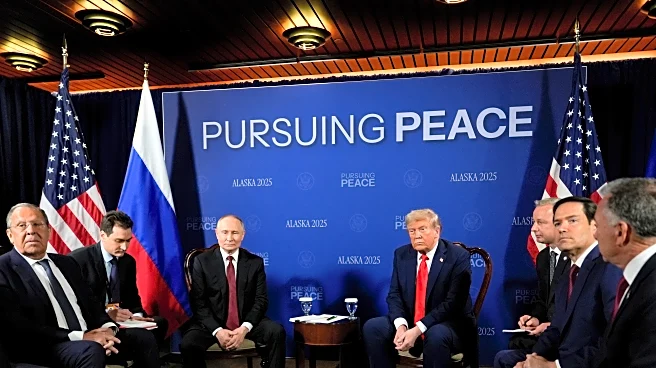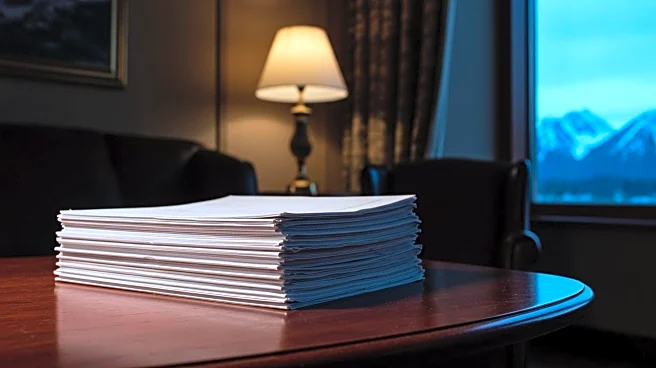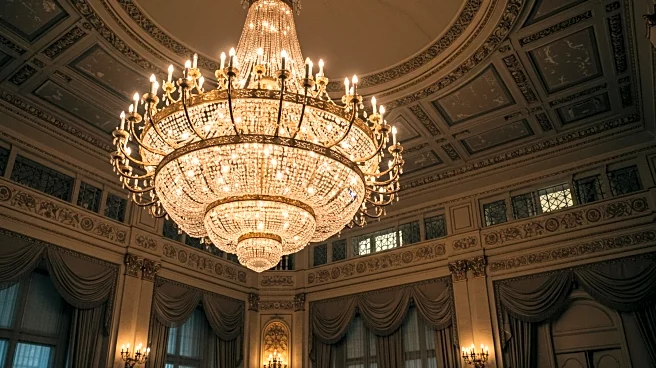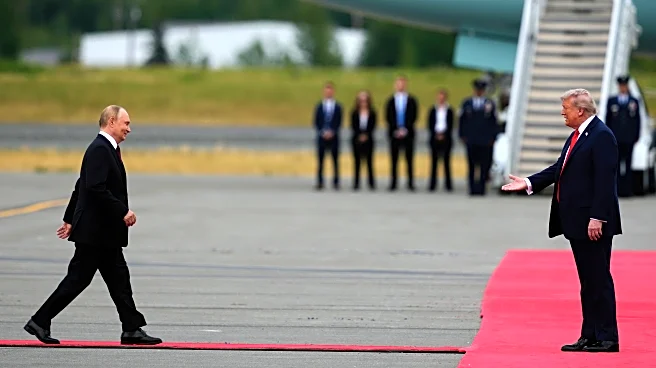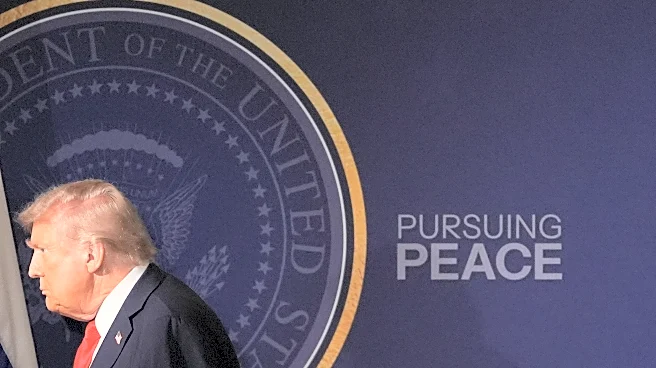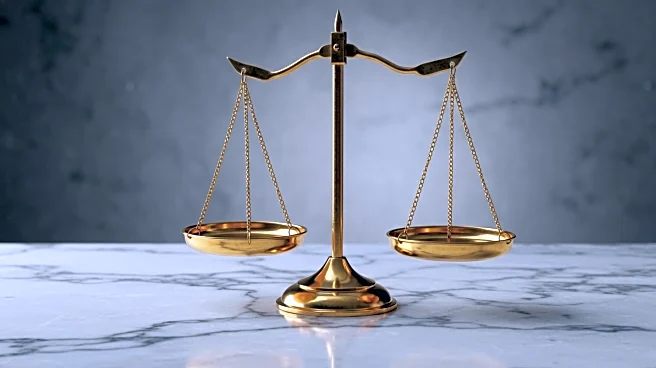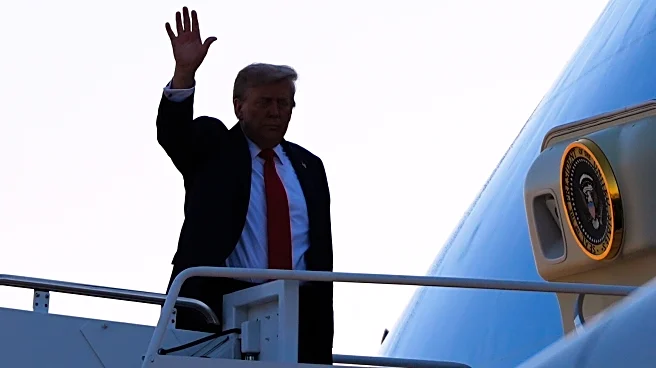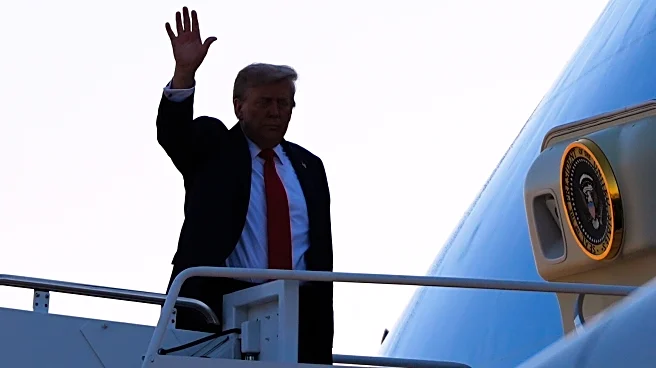What is the story about?
What's Happening?
President Trump has initiated a series of renovations at the White House, including covering the Oval Office in gold and transforming the Rose Garden into a concrete patio. The most ambitious project is the planned demolition of the East Wing to construct a $200-million, 90,000-square-foot ballroom, reminiscent of the one at his Mar-a-Lago residence. These changes have drawn criticism for their perceived extravagance and potential impact on the historical integrity of the White House. Critics argue that these renovations reflect Trump's broader approach to governance, emphasizing power consolidation within the executive branch. The renovations have sparked discussions about the balance between modernization and preservation of the White House's historical significance.
Why It's Important?
The renovations undertaken by President Trump have significant implications for the preservation of American history and the symbolic nature of the White House. The changes could alter public perception of the presidency, shifting it towards a more monarchical image. This move may also affect diplomatic relations, as the White House serves as a venue for official state functions. The funding and transparency of the renovation projects are under scrutiny, raising questions about potential influence from donors. The renovations highlight ongoing debates about the role of personal taste versus historical preservation in government buildings, impacting how future administrations may approach similar projects.
What's Next?
The planned ballroom construction has raised concerns due to the lack of submission for review to the National Capital Planning Commission, which is legally required. This oversight could lead to legal challenges or delays in the project. The funding sources for the renovations are expected to be closely examined, with potential implications for transparency and donor influence. As the renovations progress, public and expert opinions will likely continue to shape the discourse around the balance between modernization and historical preservation at the White House.
Beyond the Headlines
The renovations may have deeper implications for the cultural and ethical dimensions of the presidency. They could influence how future leaders perceive their role and the symbolic nature of the White House. The changes may also affect public access and engagement with the historical site, altering its role as a national symbol. The debate over these renovations reflects broader societal discussions about the intersection of personal wealth, power, and public service.
AI Generated Content
Do you find this article useful?



